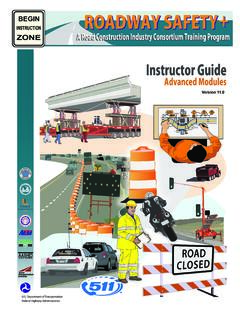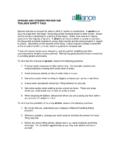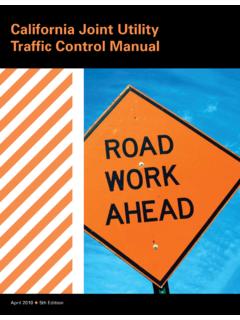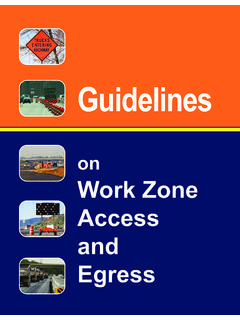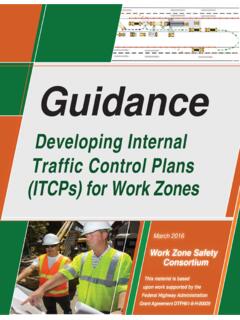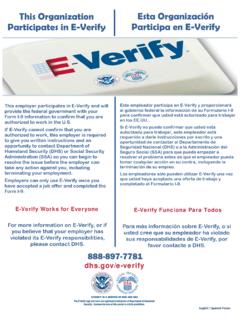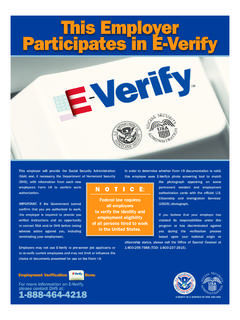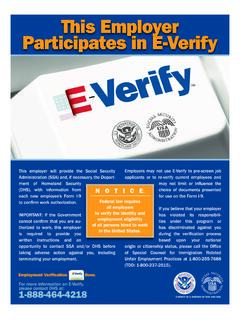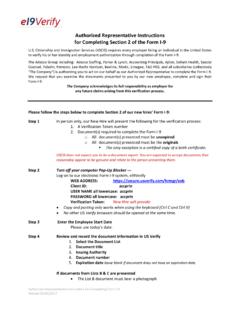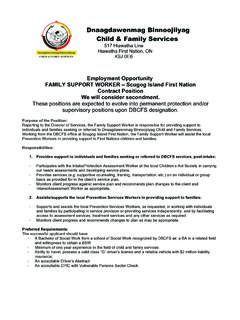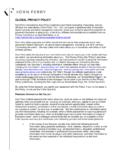Transcription of New Construction Employee Safety Orientation Guidelines
1 New Construction Employee Safety Orientation Guidelines This document is intended to be used by Construction employers as MINIMUM Guidelines to conduct a site Safety and health Orientation for all new employees, including temporary workers and subcontractor employees. The content must be developed by the employer conducting the Safety Orientation , and delivered to the Employee in a language and/or a manner that they understand. Company management and on-site supervisors/foremen should ensure that each new Employee participates in the company s Safety and health Orientation process, and reviews all necessary on-site and project-specific Safety and health information, prior to starting any job.
2 (Please note that the document is not intended to be a comprehensive Construction site training tool addressing all Construction -related hazards. employers have the option of adding additional Guidelines (and formal training) on other topics and identified hazards, such as lockout/tagout, electrical, and confined space). The site Safety and health Orientation should, at a MINIMUM, include the following CORE elements: 1. Overview of Management Commitment to Safety and Employer/ Employee Rights and Responsibilities: Explain management s commitment to Safety and health and Safety and health written policies Describe the employer s responsibilities ( , General Duty Clause of the OSH Act) Explain the Employee responsibilities/rights, scope of work, and job expectations 2.
3 Explanation and Review of the Company s Safety and Health Program/Policies including: Review the hazard communication program, including how to find Material Safety Data Sheets Review the incident reporting and investigations program Identify the company s competent persons, when required, and their specific roles Review the Employee accountability policy Review the drug and alcohol policy Review the discrimination and anti-harassment policy Review the workplace violence prevention policy Review the property damage policy Explain how Employee can provide feedback to the company 3.
4 Overview of Applicable Safety and Health Regulatory Requirements, including Employee Workplace Rights: Provide an overview of OSHA requirements/right to file a complaint Explain that employees have a right to a safe and healthful workplace, and to how to report unsafe workplace conditions ( , proper chain of command/protocol) and include a statement that there will be no retaliation for reporting them Review applicable state, regional and local municipality requirements, ordinances, codes, etc., pertaining to Safety and health, as necessary by local management and/or the joint employer and worker Safety and health committee (if applicable) 4.
5 Explanation of Site-Specific Information: Explain the identified Safety and health hazards present, or anticipated hazards on the site ( falls, electrical, confined space, hazardous materials) Explain the unique hazards or special challenges specific to this job, or scope of work 5. Overview of Hazard Identification, Assessment, and Correction: Review how to identify and correct hazards, including when employees have the training, knowledge, and skills to do so Review the Job Safety Analyses (JSAs) Review identified hazard assessment tools ( , inspections, checklists, and reports) Encourage participation in the joint employer and worker Safety and health committee Inform employees on how they will be informed of hazard abatements and corrections 6.
6 Overview of Personal Protective Equipment (PPE) Explain the mandatory/required use of PPE ( , hard hat, gloves, googles, Safety vest) Explain that PPE will be tasked according to scope of work Verify that training on specific PPE, including proper use of Safety harnesses, was conducted in a manner/language the Employee understands Review the company s respiratory protection, hearing protection, fall prevention and other PPE programs, when appropriate 7. Overview of Verification/Evaluation Process Ensure the information provided has been clearly presented and understood in a language that employees understand ( , written, oral, or work practice evaluation) 8.
7 Overview of Reporting Protocols Explain how to report incidents, such as near misses, and include a statement that there will be no retaliation for reporting them Explain that accurate reporting of incidents will be emphasized to continuously improve worker Safety and the company s Safety and health program Explain how employees will be informed of the results, and follow-up actions of incident investigations 9. Explanation of Employee Participation Explain that employees should participate in the Safety and health program and how this participation will benefit them and their fellow employees Ensure that front line employees will be included on the Safety and health committee (when applicable) Explain that the Safety and health Orientation will be interactive and encourage Employee participation ( worker voice)
8 Ensure that employees have sufficient time for questions and answers Ensure that employees will be given additional training as needed for safely fulfilling their duties 10. Overview of Emergency Procedures: Explain the emergency procedures (medical, spill, fire, evacuation, etc.), including the location of first-aid supplies, fire extinguishers, rally points, etc. Identify where emergency contact numbers are posted Annual Update All employees will be required to participate in an annual Safety and health Orientation to ensure that they remain familiar with the company s Safety and health policies and requirements, including any regulatory changes or Safety program updates and revisions.
9 This annual update review must be performed by a supervisor/upper-management personnel. All Orientation records must be formally documented and filed in the Employee file. (NOTE: The Safety and health Orientation can also be conducted on an as needed basis, including personnel change at the jobsite, changes in company policy, or new regulatory requirements). Additional Resources Provide an overview of additional free Safety and health materials, such as videos, publications, trainings tools, toolbox talks, checklists, manuals, smartphone applications, and other written materials, available from various sources, including OSHA, NIOSH, CPWR, and unions.
10 Through the OSHA Alliance Program s Construction Roundtable, the Roundtable participants developed this product for informational purposes only. It does not necessarily reflect the official views of OSHA or the Department of Labor. Under the Occupational Safety and Health Act, employers are responsible for providing a safe and healthy workplace and workers have rights. OSHA can help answer questions or concerns from employers and workers. OSHA s On-site Consultation Program offers free and confidential advice to small and medium-sized businesses, with priority given to high-hazard worksites.
